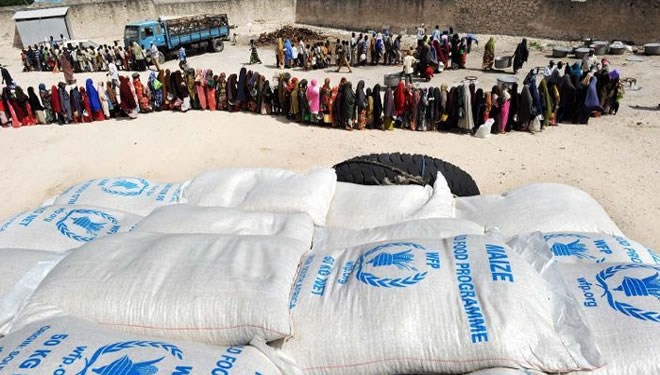by Mohamed A. Alasow
Thursday, March 15, 2018

Nearly three decades, the Somalis endured civil wars and natural disasters, the latter instigated an alternate of drought (scarcity of water) and floods (abundance of water); the ironic mixture of the natural calamities was exacerbated by deficient infrastructures, lack decent political support and monotonous aid actions founded on reactive interventions without a well thought proactive strategy to curb the frequent calamities.
To put into perspective the dynamics between drought, floods and the defunct infrastructures; the civil strife incapacitated infrastructures necessary for community resilience. Boreholes were in short supply, the rivers have lost their depth to silt and their protective banks to erosion, causing alternate of floods and scarcity of water. While ponds have also lost their depth to silt and created water shortage for nomads. The above scenario spell out the vulnerability of Somalis to both the dry and wet seasons, a vicious cycle not addressed serious.
On the other hand, the present focus of the Humanitarian Assistance is to provide and maintain relief support for IDPs in camps in urban centers, without mentioning programmes to tackle the root cause of the vulnerability and encourage the return of IDPs; farmers and nomads who would have otherwise contributed to food production were kept idle, penniless, and encouraged to join urban dwellers. Succinctly, instead of helping the needy, the aid assistance to IDPs is an opportunity for Aid organizations to get funding from donors, employ staff, and continue doing the same thing year in, year-out, to maintain the status quo -'repeated emergency'.
Traditionally, Once a calamity strikes, an appeal is made to the donors in order to contribute millions of dollars to alleviate the suffering, on their part, donors provide the funding, while expect their donations will create resilience and future emergencies will be made a history with their donations. However, donors began to notice the similarity of the humanitarian appeals, causing lack of interest on the donor's part. According to Pawley-Boyd, donors are becoming desensitized to appeals that are based on same message over and over again. In recent past, a buzzword - 'donor fatigue' - was created to camouflage the failures of humanitarian assistance. However, the question is 'who created the donor fatigue? The beneficiaries themselves or the Humanitarian Organizations? Considering the way interventions are implemented, It is time for Aid Agencies and the press to rephrase the jargon, 'Donor fatigue' to 'Mystified interventions' and start clearing the confusions by taking their roles seriously.
Nevertheless, emergency response seems to be business as usual - because the subsequent drought intervention is similar with the preceding one - the mantra is ‘life saving’ - and achievements are measured in figures. According to OCHA, Financial Tracking Service, total funding to Somalia in 2016 and 2017 was nearly US$471 million and US$611 million, respectively. Despite millions of cash funneled to Somalia, no tangible result was achieved, no infrastructure was revived and no capacity was created; emergencies are still happening, Aid Agencies are still in their places doing the same old style intervention, the Somali government is not yet empowered to take over, and donors are amazed with the lack of outcome; questioning Aid Agency's capacity. Therefore, What makes the Humanitarian Assistance a 'mystified intervention', is the redundant nature of their strategies and involvement.
According to the European Universities on Professionalization on Humanitarian Action (EUPRHA), humanitarian assistance is more than relief and provision of basic needs in emergency, it is about achieving return to normalcy, ensuring development, reviving infrastructures and strengthening community resilience. Therefore, to achieve high level of resilience leading to sustainable development, Aid organizations should consider changing their intervention strategy while streamlining it to the concept of humanitarian assistance.
Empowering the government and reviving the basic infrastructures will be the cornerstone and the primary step towards resilience and self-sufficiency. To achieve recovery, the possible areas to reinforce may be: (1) restoration water systems, (2) community empowerment in food production, (3) development of health/veterinary services.
Another area that requires much attention is the return the IDPs congregated in the camps receiving charity for an unlimited period of time. Because, changing the IDPs camp strategy and wholeheartedly supporting the IDPs return to their villages of origin will strengthen the agriculture and livestock development, particularly food production and storage; a move that will impact on the recurrent famine, human dignity and the charity dependency.
Finally, designing indicators for success and reviewing the criteria for donor support may enable the donor community to insist on competitiveness and result-based interventions that attracts donors funding, i.e. (a) success stories that makes donors proud of his actions, and (b) achievements measured on the number of communities enabled to mitigate the next emergency.
Mohamed A. Alasow, Senior Humanitarian Specialist, Former UN Technical Officer, in Somalia, South Sudan and The Sudan. E-mail: [email protected]